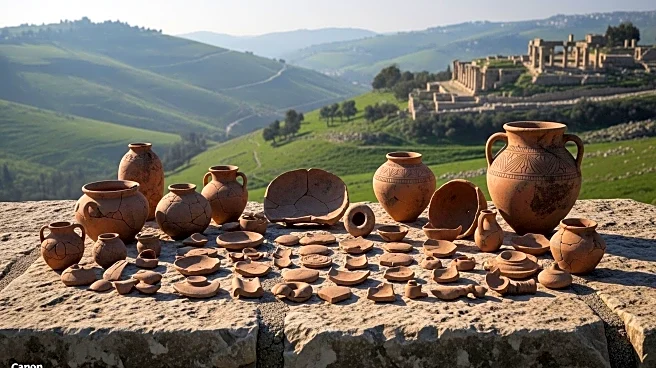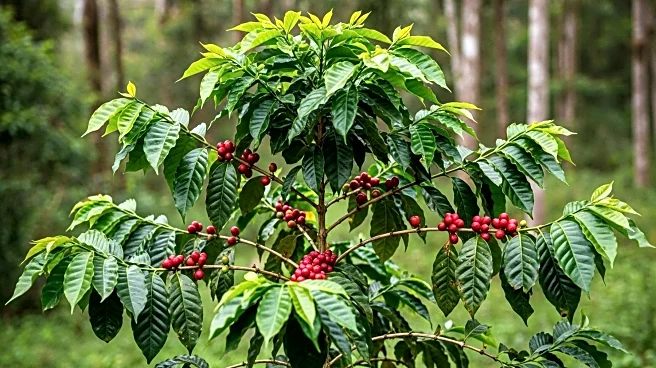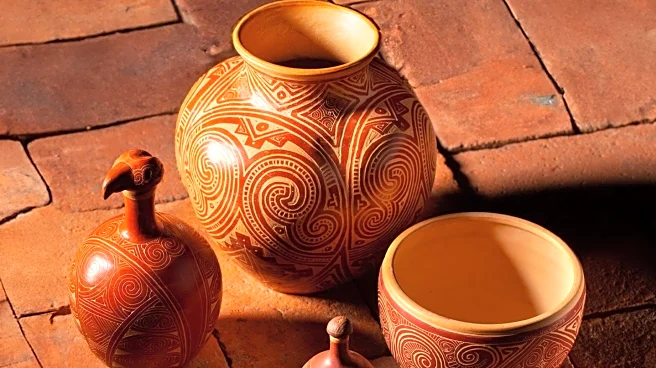What's Happening?
Archaeologists Itzick Shai and Oren Ackermann have conducted a significant excavation at Tel Ether, a site in the Judean foothills, revealing layers of settlement from the Iron Age through to the Byzantine period. This marks the first academic dig at Tel Ether, aiming to understand the historical human activity and its impact on the landscape. The excavation has uncovered walls typical of Iron Age construction, pottery fragments, and evidence of ancient agricultural practices. The research is part of a broader inquiry into how ancient populations shaped their environment, particularly through the use of phosphorus-rich ash as fertilizer.
Why It's Important?
The findings at Tel Ether provide valuable insights into the agricultural practices and settlement patterns of ancient Israelite communities. Understanding how these communities utilized natural resources and altered their environment can inform modern agricultural and ecological studies. The use of phosphorus-rich ash as fertilizer highlights an early form of sustainable farming, which could offer lessons for contemporary practices. Additionally, the excavation contributes to the historical narrative of the region, enhancing our understanding of its cultural and economic development over millennia.
What's Next?
Further analysis of soil samples and archaeological artifacts will continue to shed light on the agricultural systems and daily life of ancient communities in the Judean foothills. The research team plans to compare findings from Tel Ether with nearby sites like Tel Burna to develop a comprehensive understanding of regional interactions and economic activities. These studies may influence future archaeological methods and interdisciplinary approaches to studying ancient landscapes.
Beyond the Headlines
The excavation at Tel Ether not only uncovers historical agricultural practices but also raises questions about the ethical implications of modern farming techniques. The ancient use of natural fertilizers contrasts with contemporary reliance on chemical inputs, prompting discussions on environmental sustainability. Additionally, the cultural significance of the site, mentioned briefly in biblical texts, adds a layer of historical and religious importance to the findings.











